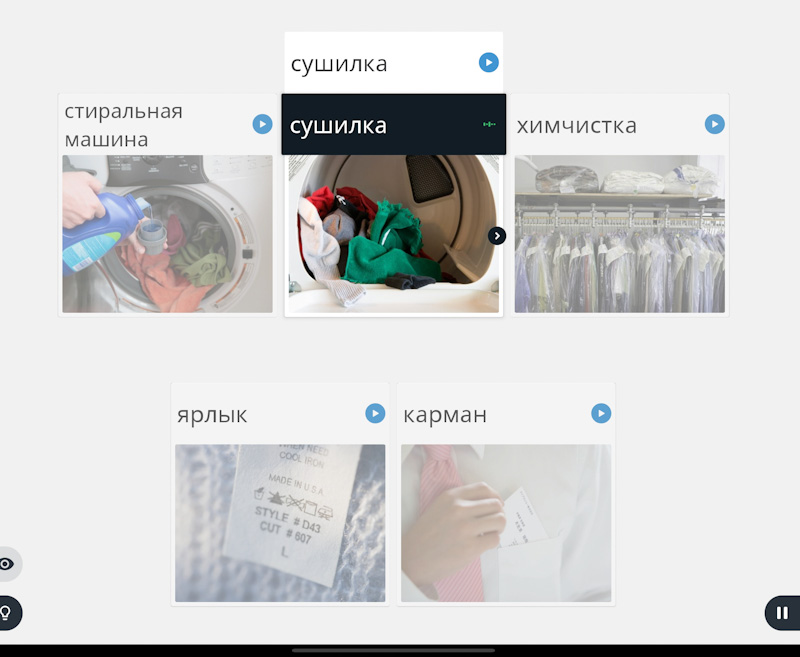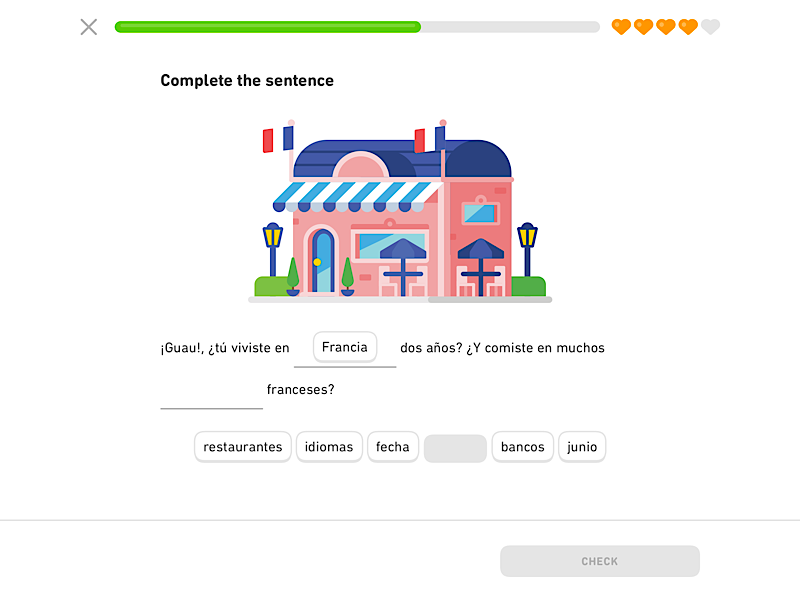Image rights: © Katrin Adam
Rosetta Stone or Duolingo – which language course is better? We tested both learning solutions and compare them here. Which will come out on top by the end of this Duolingo vs. Rosetta Stone showdown?
Table of Contents
Quick Take: We’d choose Rosetta Stone. Its content and courses are more intuitive, leading to better learning outcomes. However Duolingo also has some advantages!
Rosetta Stone vs. Duolingo – The Competitors at a Glance

Rosetta Stone emphasizes intuitive learning without boring memorization, alongside many valuable bonus features.
vs.

Duolingo is famous for its adorable mascot and high motivational factor – but does its teaching approach hold up?
Similarities: How Rosetta Stone and Duolingo Overlap
If you only looked at their ads, Rosetta Stone and Duolingo might seem fairly similar. Although big differences remain, and there is a clear winner in this match, they do share some traits. Both Rosetta Stone and Duolingo can be used on any device (via apps or web interface), and you can access all their features on each platform.
Each presents its content as a core language course that should fit seamlessly into a broader study routine. Both focus on mobile-friendly, short lessons that fit around your daily schedule.
Differences: Where Rosetta Stone and Duolingo Diverge
Now for what sets them apart: While they’re advertised similarly, neither is a traditional language course. Rosetta Stone relies completely on intuitive, context-based learning without using your native language at all. Duolingo uses conventional exercises but also avoids old-school grammar drills. Rather, it relies partially on trial and error – guess, possibly get it wrong, then figure it out.

‒ The Best Language Course of 2025 ‒
We’ve tested dozens of language courses…
But only ONE takes the #1 spot!
Additionally, Rosetta Stone includes online sessions in a virtual classroom. Duolingo stuns with a highly engaging motivational setup: a fun mascot, regular learning challenges, and the option to compete with friends and other users.
Rosetta Stone or Duolingo – Scope and Features
At the moment, Duolingo offers over 40 target languages for English-speaking users – a basic selection like Spanish and French alongside more niche options like Scottish Gaelic or Hawaiian. Meanwhile, Rosetta Stone has 24 languages available, also including less common options like Farsi. In its well-designed learning suite, Rosetta Stone also includes extras like short stories and pronunciation training.
Duolingo emphasizes challenges and friend-based competitions, which don’t necessarily enhance the learning process. So, we say:
– Point for Both –
While this next category isn’t the core of a language course, a clean, intuitive interface makes life easier. Nobody wants to tap through multiple menus just to find what they need. So how do these competitors measure up in user-friendliness?
Rosetta Stone vs. Duolingo – User-Friendliness
Both providers feature appealing, well-organized interfaces. You can navigate each course without much trouble. Duolingo’s design does feel more playful and friendly, while Rosetta Stone’s learning suite is clearly labeled and easy to follow in a linear fashion. We’re giving both a point here, since it’s tough to pick a favorite:
– Point for Both –
All that said, the most important element is the learning method itself. Which of these two stands out more—Rosetta Stone or Duolingo?
Rosetta Stone or Duolingo – Learning Approach
Duolingo (on the right) focuses on intuitive learning but uses somewhat traditional exercise styles. You can collect points through regular challenges, missions, and achievements, and compare your results with others. However, the learning approach can often feel like guesswork until you get a word wrong enough times to remember it. There’s room for improvement!


Rosetta Stone (on the left), meanwhile, guides you through consecutive exercises that systematically introduce new vocabulary, letting you learn intuitively without relying on your native language. This unique approach can have a major impact – no question:
– Point for Rosetta Stone –
Even the best course won’t help if you never open it. In addition to a solid learning concept, motivational elements matter a lot. So how do Rosetta Stone and Duolingo stack up in this regard?
Rosetta Stone or Duolingo – Motivation
This category clearly goes to Duolingo. Lessons can be super brief (sometimes under two minutes), fitting into any day. You can climb leaderboards, congratulate friends on their successes, and tackle weekly missions together. The design is charming without feeling too childish, and you can set daily reminders or even add a widget to your home screen to track your streak. Honestly, no other provider quite matches this level of gamification right now.

‒ Language Course Discounts ‒
Find the best discounts and exclusive coupons for top
language courses here!
+ + + Limited-Time Deals +++ Some Offers Expiring Soon +++ Don’t Miss Out! + + +
If you’re using Rosetta Stone but want more motivation, you can find it externally—for example, through techniques like self-nudging or our 1-Meter-HACK.
– Point for Duolingo –
A good language course is great, but its cost should be reasonable for what you get. The more features, languages, and robust learning methods you have, the easier it is to justify a higher price. How do Rosetta Stone or Duolingo compare here?
Rosetta Stone vs. Duolingo: Value for Money
Duolingo offers free learning—provided you’re not bothered by the frequent ads that pop up every few minutes. They also have different subscription plans: Individual pricing starts at $6.99 per month, while a family plan for up to six people can reduce the cost to under $2 each. You can read the full cost breakdown here!
Rosetta Stone’s pricing starts at around $11 per month for one language, and it also has a lifetime license: one person can pay $399 for all 24 languages indefinitely. So there’s a big gap both in scope and price. Rosetta Stone may be pricier, but the learning effect is substantially stronger. It’s close, but we say:
– Point for Rosetta Stone –
We’ve now covered five categories in detail. Let’s see the final result:
Points Summary

Scope
User-Friendliness
Motivation
vs.

Scope
User-Friendliness
Learning Approach
Value for Money
Conclusion – Rosetta Stone or Duolingo: Who Wins?
In a direct comparison between Rosetta Stone and Duolingo, Rosetta Stone emerges as the winner with a 4:3 score. The provider’s standout features include a well-implemented, intuitive learning concept and a significantly wider range of languages. Pricing was a close call; you can better understand it by considering the huge differences among top language course providers.
Does that mean you should buy Rosetta Stone outright? We recommend it, but naturally not every course is perfect for every person. Duolingo for example is suited for beginners and those who struggle with keeping themselves motivated. Feel free to check out the comparison between Mondly and Rosetta Stone!
Regardless of which language course you decide on, what matters most is sticking with it. If you want to see even more options, you can also find our Top 10 online courses for all approaches and budgets.
